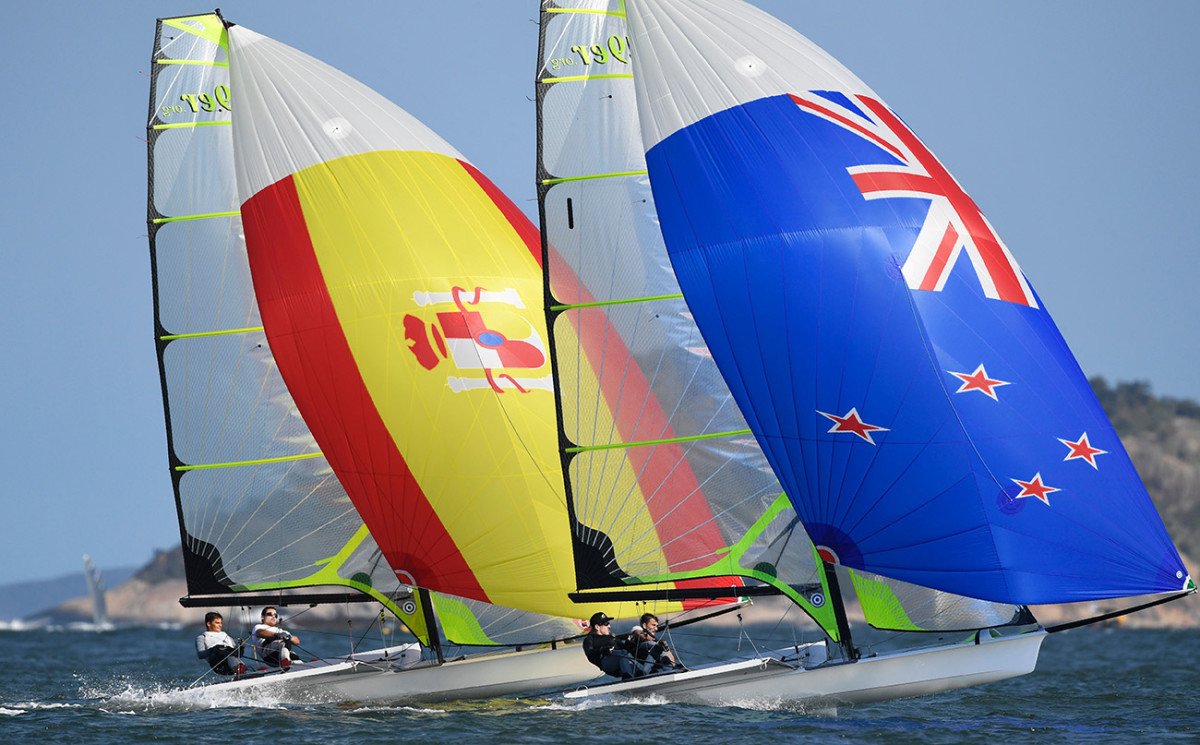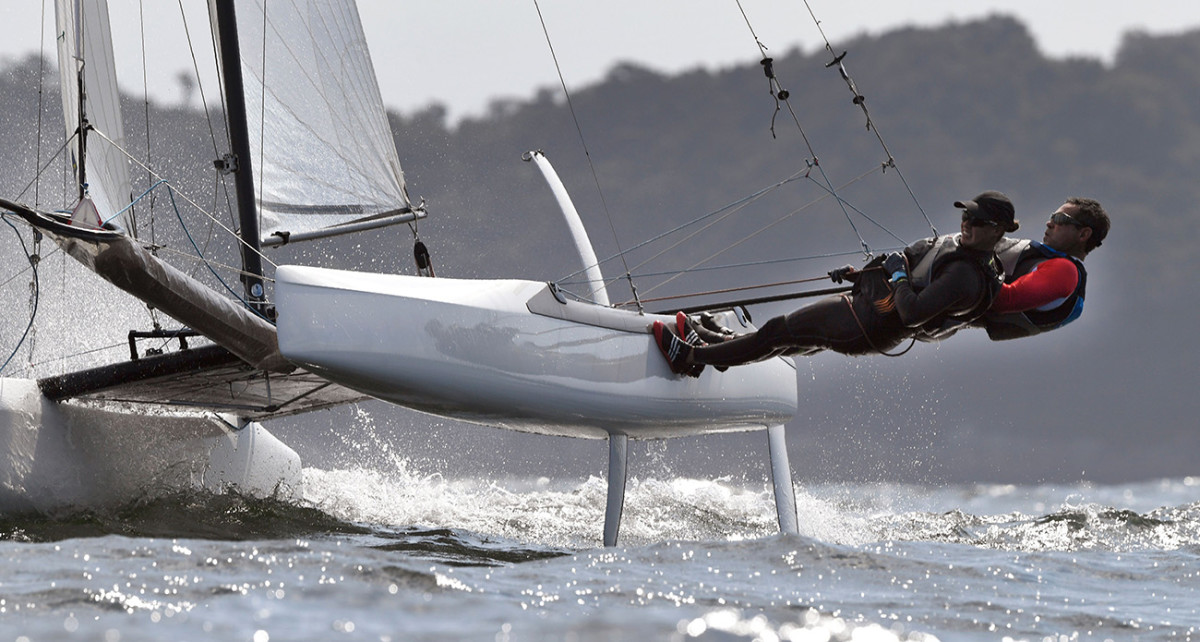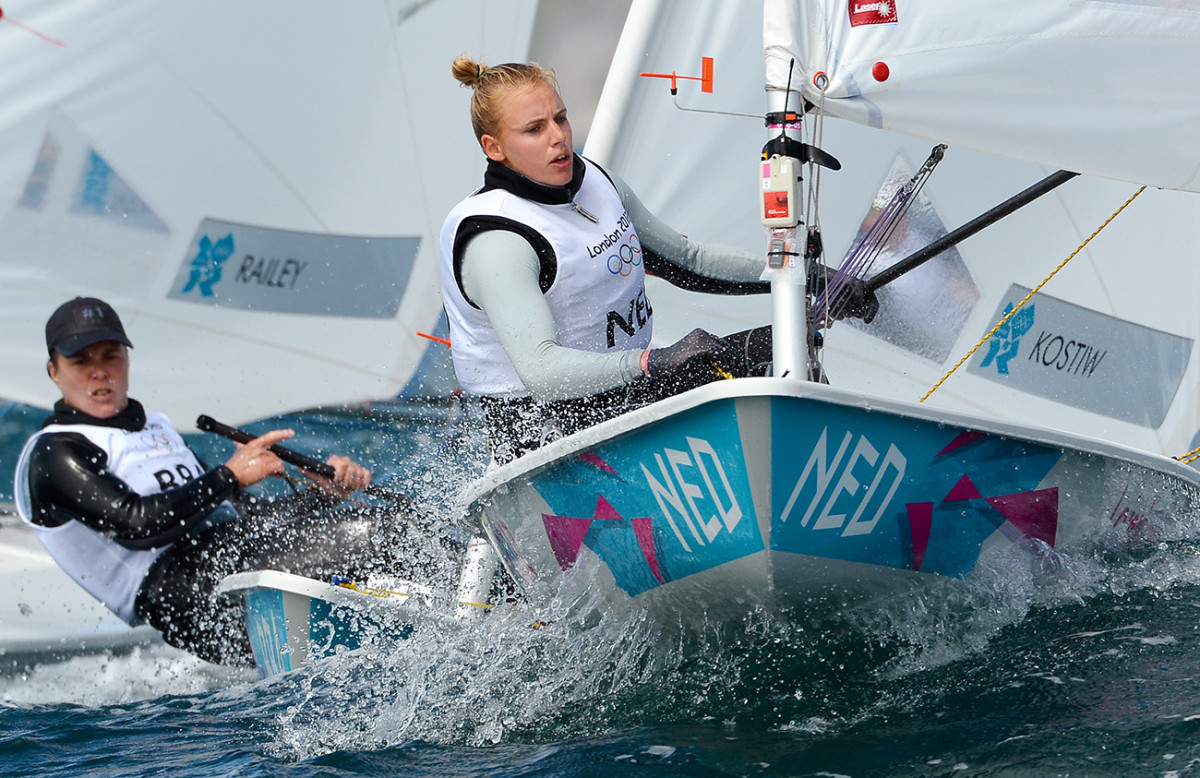2016 Summer Olympics Primer: Sailing


When you think of sailing, what comes to mind? Maybe a nice, calm ride on the ocean, lake, or even a river? Well, that’s one kind of sailing. But it’s also a sport — and it’s part of the 2016 Summer Olympics in Rio.
Sailing doesn’t get much airtime, so you might not know a lot about it. I’m here to change that!
What It Is
Olympic sailing is no different than what you might do with your family: take your boat into the water, raise your sail, and use the wind to move around. When you sail for fun, you can relax, maybe have a snack, and adjust the sail based on conditions. But competitive sailing is a little different. You have to constantly adjust the sail to go faster because it’s a race, and since you can't use a motor you need to tap the full power of the wind. There’s also a course in competitive sailing, which varies based on the venue and is defined by buoys. Sticking to a set route isn’t something you have to worry about when on the water with friends and family.

Types of Sailing
In competitive sailing, there are different types of boats known as classes. Each class has its own event. The differences between the classes are the type of boat and its designs and technical specifications. There are 10 different medal events in Rio, each event being its own class. (Even though some class names repeat, all the boats have different specifications, even though some may be minor.) In Rio, half of the events will be run by crews of men, four are women's races, and the remaining one mixed. Some classes are individual and some are teams of two.
How the Race Works
In sailing, a race is known as a regatta. Each regatta consists of one class. In the Olympics, after each class' regatta(s), the top 10 finishers (based on points) advance to the medal round. A first-place finisher gets one point, second place two points, and so on. The sailing scoring system is like golf, in that the lowest score wins.
Becoming an Olympic Sport
Sailing for trade, transportation, and fun has been around for centuries. But it’s debut in the Olympics came at the 1900 Paris Games. It was originally scheduled to debut in the 1896 Athens Games, but got delayed because of bad weather. Golds in 1900 were won by Great Britain, France, and two mixed teams. One of the mixed teams consisted of a Swiss and German.

Why You Should Tune In
There are lots of reasons! It has both individual and team events. It has a mixed event, or an event that features a team of both a man and woman. And unlike most other sports, the conditions of a sailing race change and are not controlled. Sailors have to cope with and change their methods based on the weather, meaning that meteorological knowledge is just as important as athletic skill. Finally, there are two new classes (or events) this year: Women's 49er FX and Nacra 17, which is the mixed class.
How to Watch
All of the regattas in Rio will take place at the Marina De Gloria, located on the Guanabara Bay. The first events will run Monday, August 8, and include Men’s laser and Women’s laser radial. The final medal races will be held on Thursday, August 18. That means you have 10 days to catch what is sure to be the best sailing action in the world. Make sure you tune in!
Photos: William West/AFP/Getty Images
